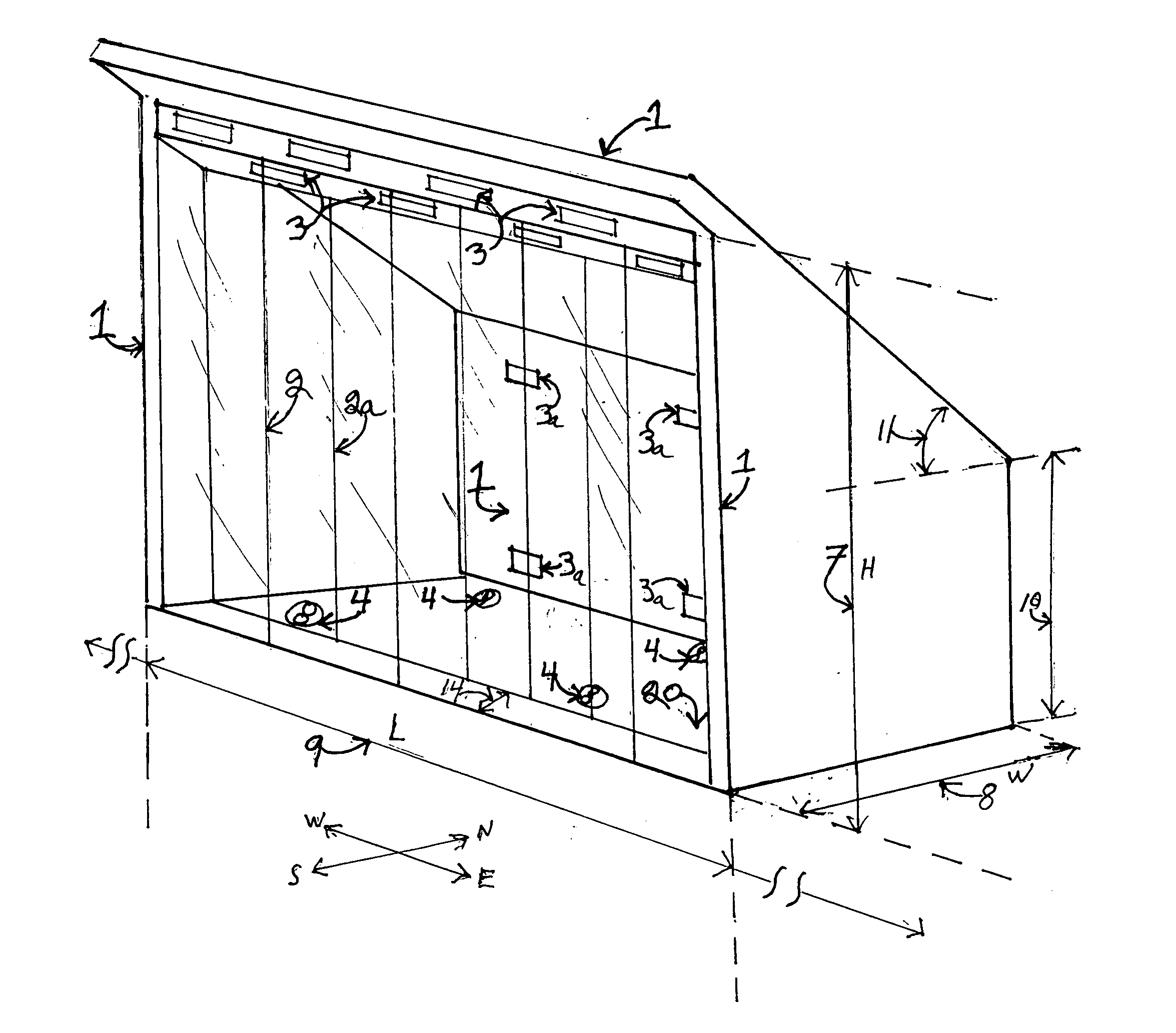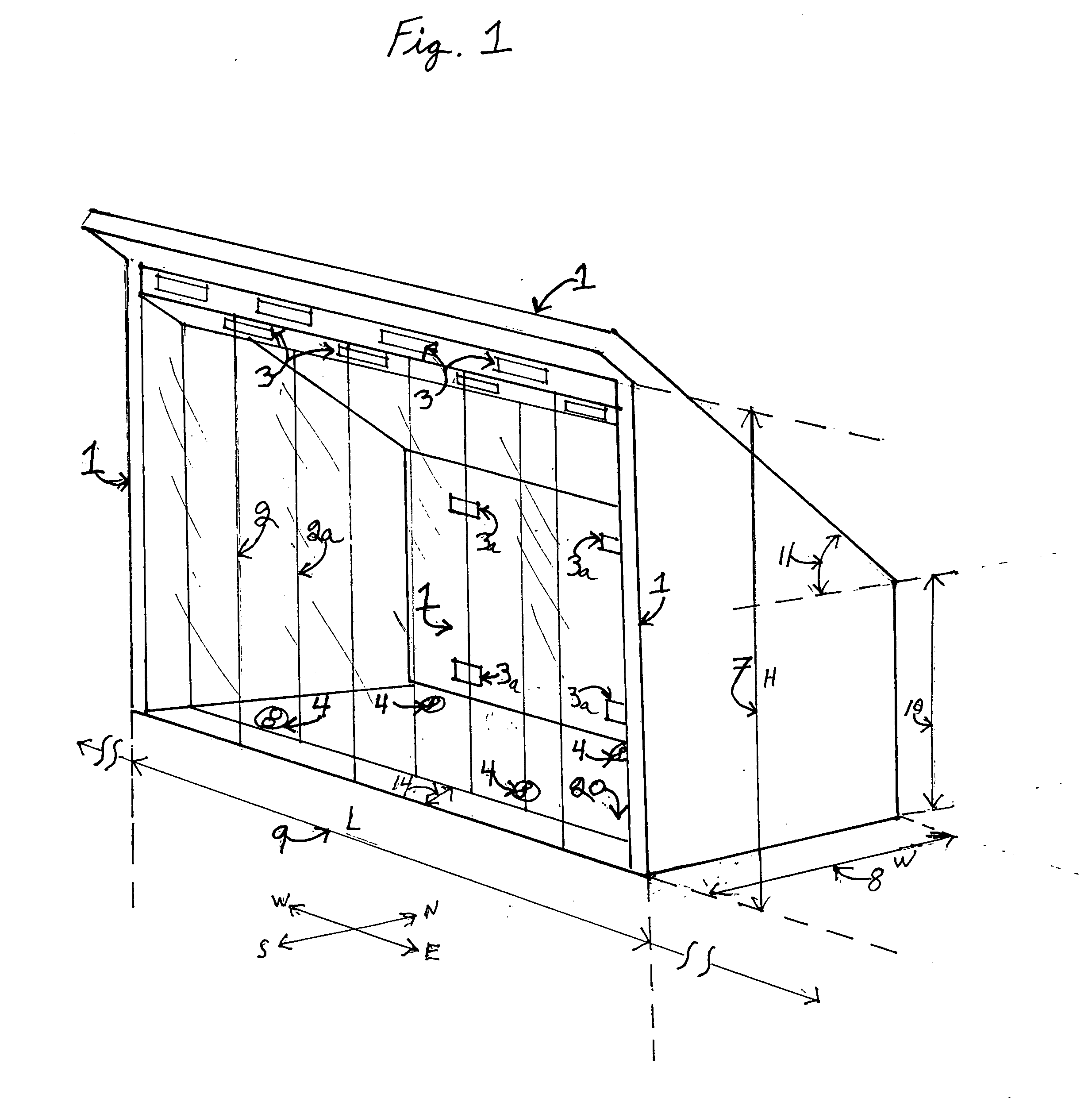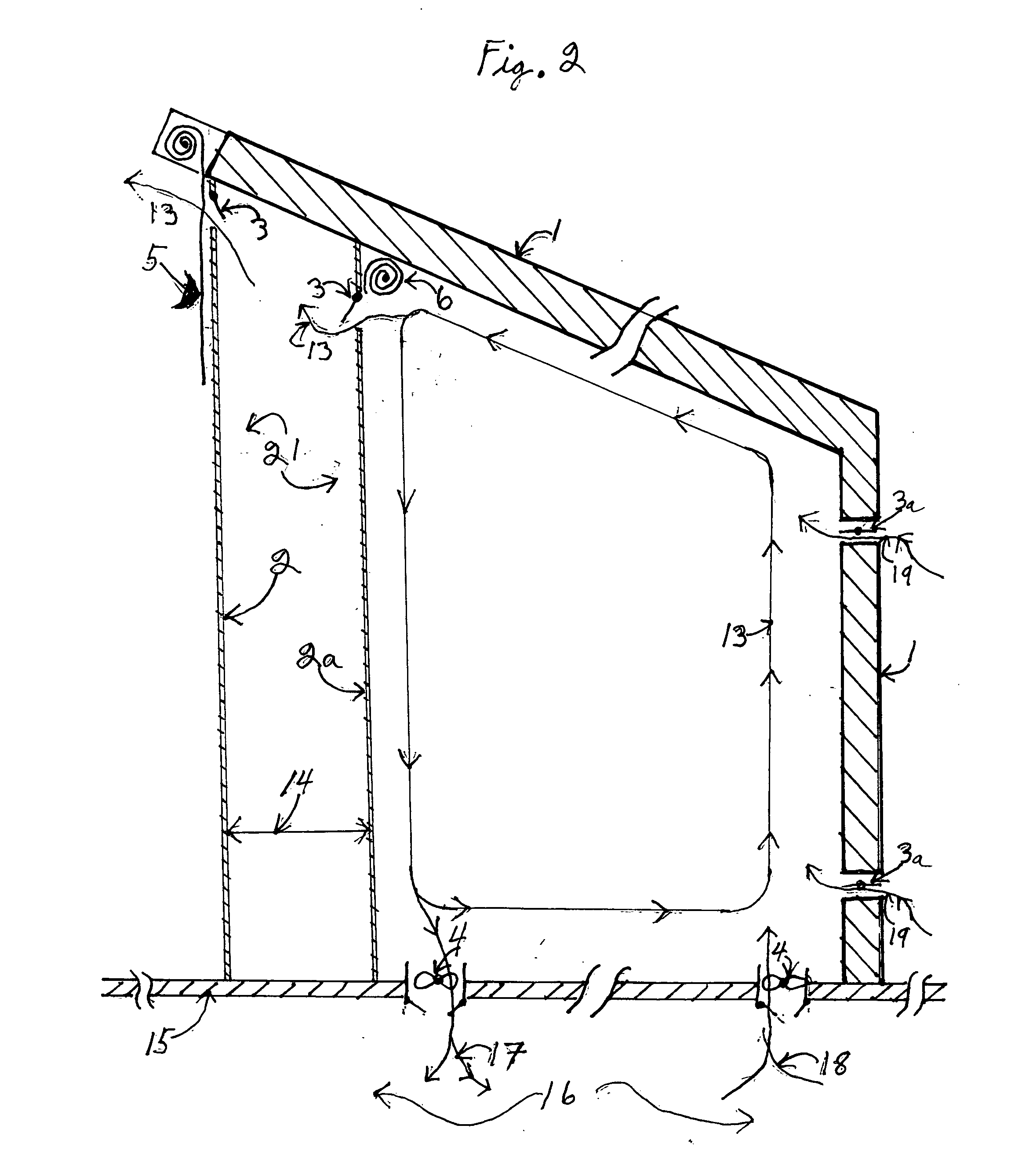Suntrap self-regulating solar greenhouse
a solar greenhouse and self-regulating technology, applied in the field of solar greenhouses, can solve the problems of large single cost to growers, lack of sufficient light levels and day-length, deleterious effects on propagation rates, etc., and achieve the effect of restricting temperature fluctuations and rapid heat loss
- Summary
- Abstract
- Description
- Claims
- Application Information
AI Technical Summary
Benefits of technology
Problems solved by technology
Method used
Image
Examples
Embodiment Construction
[0012] Referring to the drawings and to FIG. 1, a perspective view from the southeast, discloses the basic design concepts of the solar greenhouse structure of the present invention. The floor 20 is bordered on three sides by a heavily insulated thermal shell 1, which, in the preferred embodiment, is formed of east and west trapezoidal walls, a short rectangular north wall, a large, rectangular sloping roof facing north at a 6 / 12 pitch, said floor 20 to be bordered on the fourth (south) side by tall solar curtain walls 2&2a, in the preferred embodiment of glass and appropriate support means, which extend from floor 20 to shell 1 (roof) and connect shell 1 (east and west walls), forming two distinct surfaces, generally planar and vertical, with an obvious separation 14 between outer solar wall 2& inner solar wall 2a. The overall configuration of the structure is likened to a simple “shed” design, the geometry of said design being an essential element of the functionality of the inven...
PUM
 Login to View More
Login to View More Abstract
Description
Claims
Application Information
 Login to View More
Login to View More - R&D
- Intellectual Property
- Life Sciences
- Materials
- Tech Scout
- Unparalleled Data Quality
- Higher Quality Content
- 60% Fewer Hallucinations
Browse by: Latest US Patents, China's latest patents, Technical Efficacy Thesaurus, Application Domain, Technology Topic, Popular Technical Reports.
© 2025 PatSnap. All rights reserved.Legal|Privacy policy|Modern Slavery Act Transparency Statement|Sitemap|About US| Contact US: help@patsnap.com



